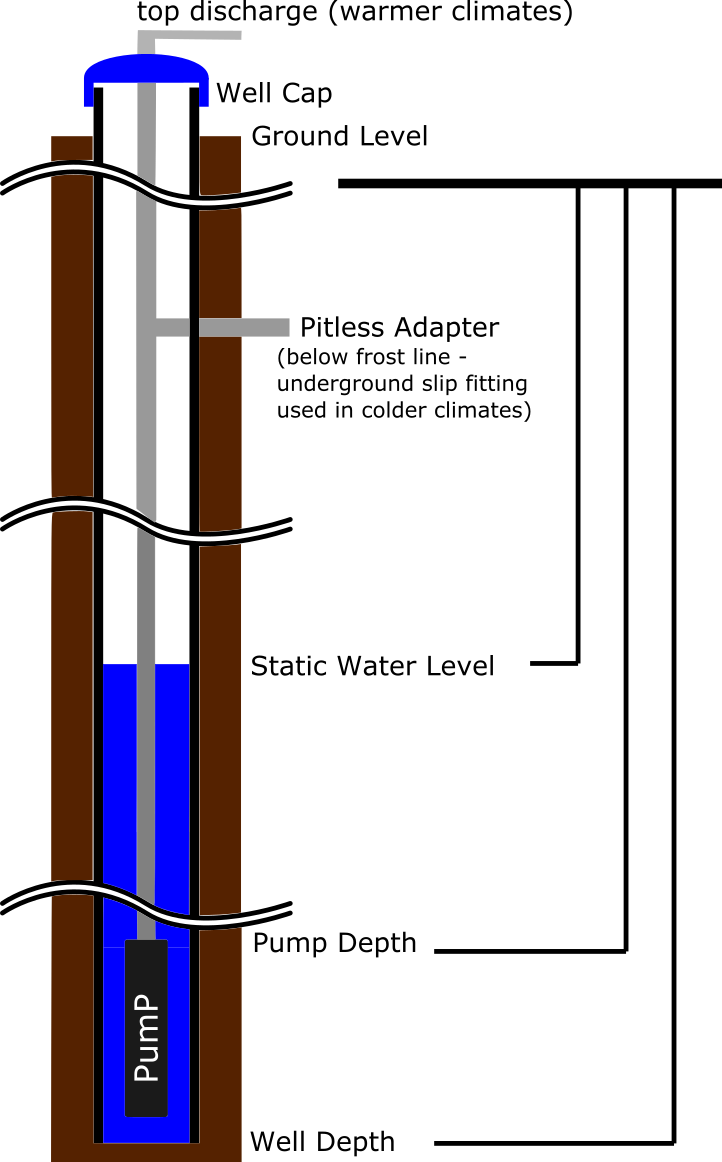Measuring Your Static Water Level
Your static water level (often simply called "the water level") is the distance from ground level down to the water in your well. The meaning of "static" is the normal "resting" level of water --- i.e. when you are not pumping and haven't pumped recently. Be very sure you are careful following these procedures so you do not tangle the measuring line in the wiring or safety wire if you have a pump currently installed. If you do get stuck, it may be best to tie off the line so it does not sink and become bound in the pump impeller.
If you have pumped, then the water level, of course, is changing as the well fills back up to the static level ---- not the time to measure depth. The speed at which your well refills - e.g. three gallons per minute - is called your "Recovery Rate".
To determine your static water level yourself, you'll need
- A small fishing weight
- A 1 1/4" to 1 1/2" diameter bobber (i.e. float)
- Lightweight fishing line or kite string, long enough to get to the water level. This might be as long at 600ft, but varies greatly depending on region and can be as low as just a few feet. The USGS has groundwater data on a number of wells across the nation, notice the variance within states.
